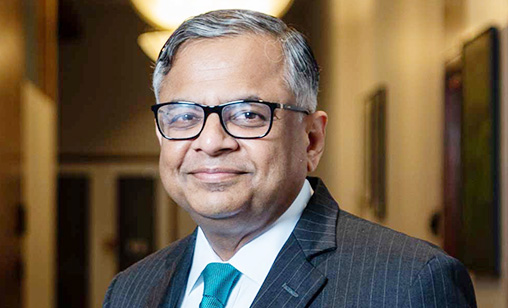News Backgrounder
Piecing together the new Air India
April 1st 2022
The air is clearing at Airlines House on New Delhi’s Parliament Street, the headquarters of the country’s recently privatized international carrier, Air India. Read More » As one of India’s largest private conglomerates, Tata Sons (Tata’s) takes full charge at its high profile acquisition, the conglomerate has appointed Tata Sons chairman, N. Chandrasekaran, as the airline’s chairman after Ilker Ayci, previously Turkish Airlines chairman, backed out of the offer to be the Indian airline’s new CEO.
Even before the Tata’s new board, which still has a few members of the Air India old guard among its members, began work, the restructuring of an aimless Air India had begun. Tata’s had decided to begin integrating AirAsia India (AAI) into Air India after joint venture minority shareholder, AirAsia Group, fully exits the partnership. Additionally, full-service Vistara, the joint venture between the Tata’s (51%) and Singapore Airlines (49%), will continue to function independently - for now.
 |
Post-pandemic, the Singapore Airlines group (SIA) is judged as neither in the position nor the frame of mind to take any financial calls on something as big as this, according to sources close to developments at Airlines House. If and when SIA is ready to consider this matter in its entirety, it is possible Vistara may become a separate entity with SIA holding diluted equity in the new Tata airline of a merged Air India and AirAsia India. Since this will not happen immediately, Tata’s will have some breathing space before it takes a shot at merging different airline cultures, schedules, staff and operations.
Tata’s venture, failed AirAsia India, is easier to resolve. Tata’s has paid US$37.7 million for 32.7% of the Malaysian company’s equity in the bankrupt LCC. In coming weeks, it will buy the remaining 16.3% of AirAsia India held by its Malaysian investor for US$18.83 million.
When these transactions are completed, Tata’s will own 100% of AirAsia India and the airline will be folded into Air India operations. Completion of the deal is likely to take from nine to 12 months from now, according to sources close to developments.
AirAsia Group co-founder, Tony Fernandes, who in 2013 brought in half the US$30 million needed to buy a 49% holding in the India LCC, is estimated to walk away with a minimum of US$56 million from the buy-out.
Since both partners have had to inject funds into AirAsia India over the last nine years, it is difficult to know if the Fernandes investment has paid off. In terms of the controversies the airline has provoked in India in its early years, many would say it has not. AirAsia India has a fleet of 28 A320CEOs and a market share of 4.6%, January 2022 data from the Directorate General of Civil Aviation reports.
At Air India, a small team led by Tata’s senior vice president, Nipul Aggarwal, has the unenviable task of fixing the many problems of the former government airline and is “shadow dancing”, senior airline officials and commanders told Orient Aviation.
As yet, no major feathers have been ruffled among the four Air India directors still on the airline’s board. Changes, when made, have been largely cosmetic. Departmental heads remain in place. But the new owner is emphasizing the importance of on time performance in rebuilding the airline’s reputation and has initiated processes to better this critical operating metric. Improvements also are being made to onboard food and beverage offerings although they are yet to be visible or endorsed by the airline’s customers. Passengers known to this writer, who took Air India flights in the last few days, said the food on board remained “nothing to write home about”.
Directives also have been issued urging crew to refrain from shopping indiscriminately at duty free outlets. Airline insiders added non-essential staff and non-performers were beginning to get jittery about their tenure as the days went by. A State Bank of India led consortium is expected to assist in raising funds to invest in the carrier.
Elsewhere, some Air India senior sources and industry observers maintain Tata’s lacks the depth of knowledge in airline economics and dynamics to operate the carrier successfully. Tata’s veteran, Sunil Bhaskaran, who was pretty new to the airline business when he took charge at AirAsia India in 2018 and then led the buyout of the LCC on behalf of Tata’s, has a deeper understanding than most involved in shaping the new Air India, observers believe.
Since AirAsia India and Vistara only have been drains on Tata’s resources and there are no visible signs of a turnaround in sight, many in the industry remain unconvinced the conglomerate can pull off any Air India marketing coups in the immediate future. This is a long-term gamble and not one certain to pay off, sceptics assert.
Three passengers told this writer recent flights were on time and the staff seemed to have been injected with a syringe of “professionalism”. A former Air India director, who flew as a paid passenger between Delhi and Mumbai last week, said there was some change in staff attitudes and bearing. “I could visibly see the “Tata” effect. Years of complacence seems to have been shed quite rapidly as ground staff and crew appeared more alert and awake!” he said - only partly in jest.
Frank Iso says:
November 10th 2025 07:55am